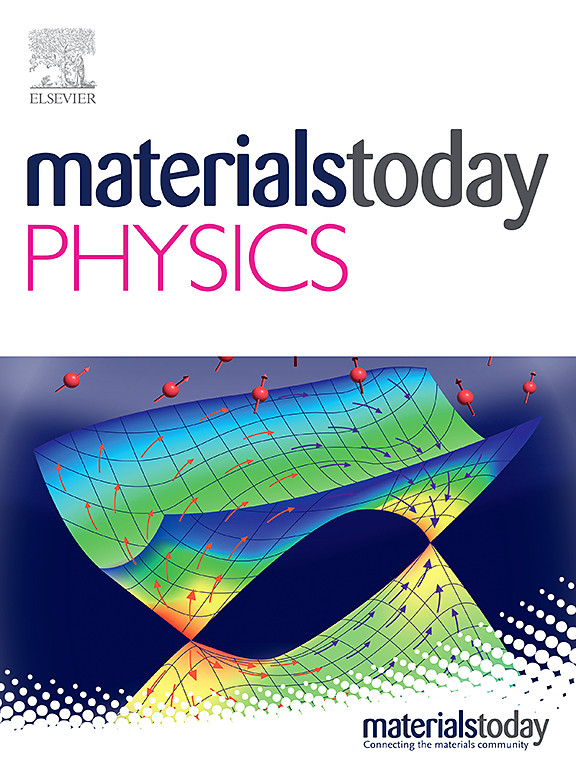Anderson disorder related p-type conductivity and metal-insulator transition in β-Ga2O3
IF 10
2区 材料科学
Q1 MATERIALS SCIENCE, MULTIDISCIPLINARY
引用次数: 0
Abstract
The p-type doping is one of the main challenges of the emerging semiconductor β-Ga2O3 technology. Phosphorus (P) implantation has been recently reported as a novel route to achieve p-type conduction on Ga2O3 at room temperature. Here, P-implanted epilayers, grown onto c-plane sapphire revealed a pseudo-metallic behavior (ρ = 1.3–0.3 Ω cm) in the 300–600 K range with a hole carrier concentration of p ⁓ 4–6 × 1018 cm−3 and hole mobility of μ = 1.2–2.1 cm2/(V·s). At sufficiently low temperature, a metal-insulator transition arises together with an increase in the positive magnetoresistance, reaching up to 200 % (9 T) large positive magneto resistance effect at 2 K. It is suggested that an Anderson delocalization model explains the room temperature conduction, and the transition to an insulator state caused by random variation of potential related to the incorporated phosphorous in Ga2O3. We believe that the lack of shallow acceptors can be mitigated by promoting Anderson disorder through the incorporation of a high level of acceptor impurities.
β-Ga2O3 中与安德森无序有关的 p 型电导率和金属-绝缘体转变
p 型掺杂是新兴半导体 β-Ga2O3 技术面临的主要挑战之一。最近有报道称,磷植入是在室温下实现 Ga2O3 p 型传导的一种新方法。在这里,生长在 c 平面蓝宝石上的磷植入外延层在 300 - 600 K 范围内显示出假金属行为(ρ = 1.3 - 0.3 Ω-cm),空穴载流子浓度为 p ⁓ 4 - 6 ×1018 cm-3,空穴迁移率为 μ = 1.2 - 2.1 cm2/(V-s)。在足够低的温度下,会出现金属-绝缘体转变,同时正磁阻增加,在 2 K 时达到 200% (9 T) 的大正磁阻效应。有人认为,安德森析出模型可以解释室温传导,而向绝缘体状态的转变是由与 Ga2O3 中的磷结合相关的电位随机变化引起的。我们认为,可以通过加入高水平的受体杂质来促进安德森无序,从而缓解浅层受体的缺乏。
本文章由计算机程序翻译,如有差异,请以英文原文为准。
求助全文
约1分钟内获得全文
求助全文
来源期刊

Materials Today Physics
Materials Science-General Materials Science
CiteScore
14.00
自引率
7.80%
发文量
284
审稿时长
15 days
期刊介绍:
Materials Today Physics is a multi-disciplinary journal focused on the physics of materials, encompassing both the physical properties and materials synthesis. Operating at the interface of physics and materials science, this journal covers one of the largest and most dynamic fields within physical science. The forefront research in materials physics is driving advancements in new materials, uncovering new physics, and fostering novel applications at an unprecedented pace.
 求助内容:
求助内容: 应助结果提醒方式:
应助结果提醒方式:


